
Streets: Banksy (Nottingham)
Streets: Banksy (Bristol)

Studio Visits: Sickboy –“Dreamworlds POV” @ Mirus Gallery (SF)

Returning to San Fransisco next Friday for his second exhibition with Mirus Gallery, Sickboy (interviewed) will be presenting a new series of paintings and sculpture entitled Dreamworlds POV. Arrested Motion paid a visit to the Bristol-based artist’s studio, which is housed in a former Victorian church, to see what he has in store.
Sickboy’s installation at the Vanguard museum show (covered) takes viewers from a 2D painting, through a 3D sculpture and onwards to an ethereal 4D otherworld. This new body of work builds on that spatial theme and adds in a temporal exploration which creates a Minkowskian universe where space and time converge to create an independent reality. This sense of time is expressed though the use of various aesthetic elements within the large-scale paintings: a figure adrift in a boat revives Sickboy’s own character-based style from earlier in his career; the continually evolving plains of patterned surfaces from his contemporary work is strongly present throughout; while, tactile furrows created from fluorescent pink moulding paste represent new and future frontier within his practice.
Hermann Minkowski's geometry makes parallel universes not just a possibility but a mathematical necessity. These parallel universes are mirrored within our own world by the physical and digital realms and Sickboy has explored both to produce these new paintings; imagery has been drawn by hand, imported into a computer to allow it to be manipulated further and pulled back into a physical form to be reworked further. By fluidly moving back and forth between these dimensions, the artist has been able to create disorientating spaces whose underlying sense of anxiety is only heightened by the fractured imagery being rendered in otherwise harmonious pastel shades. However, the whole exhibition is imbued with an undercurrent of optimism by virtue of two illuminated sculptures whose light radiates a euphoric sense of hope and redemption.
The show runs until 12 November at Mirus Gallery, 540 Howard Street, San Francisco, CA 94105.
Photo credit: feralthings
Discuss Sickboy here
Studio Visits: Carl Krull – Protagonist @ Formation Gallery

Today in Copenhagen, a new exhibition from Carl Krull (featured) will mark the grand opening of Formation Gallery, a new space in the heart of Vesterbro. Known for his Seismic series of black & white works, the Danish artist is venturing into new territory with color and a more sculptural aesthetic.
“There was a time when my studio consisted of a pair of virtual reality glasses. VR showed me that my drawn line was thriving detached from the surface of the paper and was sculptural by nature. My drawings became three-dimensional, like celestial bodies, and the boundaries between sculpture and drawing disappeared. If I had ever had an insecure feeling about making sculpture that was restraining me, it was now gone. And in recent years I have made three very different sculpture projects in the public space. My work with VR and sculpture had propelled a new artistic liftoff and unlocked the third dimension, it was my second artistic breakthrough. My first breakthrough had been my seismic work that depicted figures inhabiting topographical territories, in a manner that resemble phenomena found in nature like the formations in stalactite caves or the growth rings found in trees. I now work much more unrestrained, less dogmatically, and after a 10-year break from painting, I have spent the last three years working exclusively with painting. My upcoming exhibition Protagonist at Formation Gallery is the first time I show this body of work.”
Take a look at some shots from the studio courtesy of Henrik Haven.
Streets: Pejac –“WELCOME” (Nuart Aberdeen 2022)

Recently in Aberdeen, Scotland, Pejac completed his latest outdoor project which he entitled WELCOME. The whimsical and detailed work features his version of a classic doormat with a resulting piece that is more than the sum of its parts. The street intervention was placed in front of a building that the Spanish artist chose because it has hosted many charities as well as is a home for vulnerable residents facing social exclusion.
Created for Nuart Aberdeen 2022, Pejac hopes the piece presents a "message of dignity, understanding that those who have been pushed to the margins of society can recognise the importance of an open and heartfelt welcome more than anyone. It reframes the potential of those who have been discriminated against and in some sense stepped over by society, and presents them as united and proud."
The artwork can be found at:41 Union St, AberdeenAB11 5BN, United Kingdom.
Discuss Pejac here.
Releases: Top 10 Books of 2022

Despite the indisputable importance of digital media in the art world, the appetite for physical books remains undimmed and this year has seen the release of some beautifully crafted works. So, in no particular order, here are our favorite books published in 2022.
‘4000’ by INVADER

The Parisian-artist’s global invasion is undoubtedly one of the largest and most ambitious art projects that has ever been undertaken. In addition to photos of all the 4000 pieces which he has created in 80 cities worldwide over the last 23 years, this dense, pocket-sized almanac also provides statistical analysis about everything - from which city has the most surface area covered to the number of tiles used each year. The book accompanies an exhibition of the same name which runs into the New Year at OTI in Paris.
‘SPRAYNATION’ by MARTHA COOPER

Subway Art is undoubtedly the bible of graffiti, but Spraynation, created from the contents of Martha Cooper’s extensive archives, demonstrates just how rich and deep the culture was during New York’s Golden Age. The book contains photos of a pristine Seen whole car running through the Bronx, writers painting at Sam Esses’ Graffiti 1980 studio, a Stay High 149 tag in the wild, Lady Pink hanging in her kitchen and innumerable other gems. Cooper’s photographs often consciously capture the works' surroundings and, in doing so, help to set stylewriting in its wider societal context.
‘FLIP FLOP’ by MOSES & TAPS

In many ways, FLIP FLOP™ is a followup to the German duo's 2014 book SAME SAME; a celebration of the repetition of the throw-up. 362 pieces wrought on trucks, track sides, trains, rooftops and underpasses in their trademark yellow and blue. The publication has been arranged in such a manner that it can be viewed as a flick book which creates a beautiful mis-match between the fleeting time an image catches the eye and the time, risk and commitment required of the writers to execute each piece.
‘LIFE'S A MISSION, THEN YOU'RE DEAD' BY REVS AND XSOUP w/ ABOR

Reading Life’s A Mission is like sitting on the Writer’s Bench listening to 100 of New York’s finest graffiti writers from over the last half century each recounting a memorable bombing story: Snake 1 recalls police officers spraying his brand new leather jacket after catching him tagging buses; Desa MTA remembers painting the Manhattan Bridge on the night before being sentenced to jail time; False DKLT describes doing a tribute piece standing on a sketchy awning above a pizza joint in the Lower East Side. But the cherry on the top of this compendium of mischief and mayhem is that the cover of each copy has been hand-drawn by none other than the legendary Revs.
‘BEAUTY OF A TRAGEDY' by ESCIF and friends

Tamara Djurovic, known to many as Hyuro, was one of the brightest and most vital new talents to emerge over the last decade. So her untimely passing was felt keenly by not just those who knew her personally but also those who came to understand the world we live in better through her subtle and considered work. The book documents the distinct visual language which Hyuro crafted to eloquently address issues ranging from the discriminatory prohibition of abortion in Brazil to the roles played by women in times of conflict.
‘JEAN-MICHEL BASQUIAT: KING PLEASURE' BY LISANE BASQUIAT AND JEANINE HERIVEAUX

There’s no shortage of publications about Basquiat - Harvard’s library alone has over 100 books on the man - but what sets King Pleasure apart from the others is its intimacy. The book accompanies an exhibition staged by his family earlier this year and, in addition to large-scale paintings such as Hollywood Africans, the book also contains previously unseen sketches, his complete video collection and even maps of New York showing the shop on Canal Street where he bought his paint.
‘HELL HOLE HOPE’ by MiMA

Hell Hole Hope documents the first five years of the Millennium Iconoclast Museum of Art (MiMA) in Brussels. Since opening, the museum has been squarely focused on engaging its visitors but, rather than doing this through a diet of superficial eye candy, they have instead pursued a program dedicated to artists whose work is conceptually interesting and relevant; MiMA have sought to bring a greater understanding of this work so that members of the public become hooked on the ideas contained within. Boris Tellegen’s A Friendly Takeover particularly stands out for its breadth and depth, but the book also demonstrates the consistently high quality of shows since including Escif and Todd James.
‘THE RED SKEIN’ by SWOON

It’s been over a decade since Swoon last released a monograph and, given just how creatively fecund she is, you would imagine that 224 pages would only scratch the surface of the projects she’s created over the intervening period. But The Red Skein is a book that goes deep; deep into her own personal trauma and deep into society’s wounds. Importantly, the New York-based artist's work also contains a strong focus on the path to healing which is explored through multiple pathways including installation, workshops and, most recently, live animation.
‘REPRODUCTION' by BARRY MCGEE

Reproduction is Barry McGee’s first book dedicated exclusively to the medium of photography and at times it strangely feels both like one of his DIY zines and a fine art photography publication. The images are a record of the communities and environments in which he lives and they act as the inspiration and source material for much of his studio work. Recurring subjects include buffing and graffiti, burnt out cars and urban detritus, surf trips and family portraits; all of which he can then mentally process before recycling them back into his paintings, sculptures, and installations.
‘POLARITIES’ by JOSÉ PARLÁ

This catalog accompanied the José Parlá exhibition by the same name at Library Street Collective in Detroit. The free-form composition of the works creates an asymmetrical sense of balance which asks the question whether art and eduction can act as a counterweight against the increasing political and religious extremism we see in the contemporary world; Parlá explores these ideas further in the book through poetry. The multiple layers of paint in Parlá’s work create a physicality and topography which is captured with surprising dexterity in the catalog's photos.
Photo credit: feralthings
Preview/Art Focus: Futura –‘Breaking Out’ @ University of Buffalo

Retrospectives are rarely as overdue as the one opening on Saturday at the University of Buffalo Art Galleries. Breaking Out spans both of the university’s locations - UB Center for the Arts and the UB Anderson Gallery - and provides a comprehensive survey of the five decade-long career of Futura. So, it seems like a timely opportunity for us to take a look back at the life and works of one of the most innovative and influential artists of our time.
Leonard Hilton McGurr was born on a crisp, clear November day in 1955 in the oldest public hospital in the US, Manhattan’s Bellevue Hospital. An only child, McGurr grew up a stone’s throw from the 1 Train on West 103rd Street. One day, aged 15, his mother dropped the bombshell that she was not his biological parent: "My mother, who was black, just came out with it one day," he explains. "She said you must never tell your father [a white Irish Catholic]." The late 60s and early 70s in America were defined by both increasing politicization and a growing counter-culture; while the former did not significantly influence the young McGurr, the latter certainly did. The news of his adoption stole his identify, but graffiti allowed him to find his own sense of self outside of the familial environment and that evening he become Futura 2000. The name derived from the typeface and Ford Lincoln concept car, coupled with a nod and a tweak to Stanley Kubrick’s 2001: A Space Odyssey, which had such a profound effect on the young man when it was released a couple of years earlier.
Futura first started writing at the 103rd Street Station near his home and spent the next two years motion tagging the insides of subway cars, particularly on the line which passed closest to his home. Graffiti gave him the opportunity and excuse to explore the system in which he lived, but he recalls that principally "I wanted the world to know my name." He occasionally hit up buildings in Queens and the Bronx, but his first full piece was in Riverside Park on what later became known as the Freedom Wall; this spot would later go down in graffiti history as the location of Zephyr, Revolt and Sharp’s iconic Wild Style piece for Charlie Ahearn’s eponymous film. In those early years, Futura’s tag was measured, structured and a far cry from the instantly recognisable free-flowing cursive that we know today. Futura had no formal art eduction, but he had no need for one; as he saw graffiti was "a school of arts and a culture that kind of invented itself. I think we were teaching each other how to do what we were doing and learning from each other."
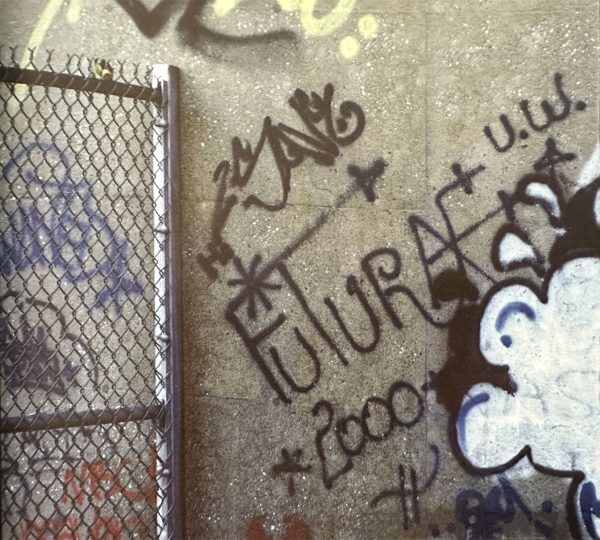
Futura had been friends with Marc André Edmonds, better known as Ali, since they were running around the Upper West Side together aged just 5 years old. They had been writing partners since the start and on a Monday morning at the start of September 1973, they took over 50 cans into a tunnel to paint all six trains laid up between the 137th and 145th Street stations. Being a Labor Day weekend, the line should have been quiet but a cleaning crew unexpectedly arrived and turned on the train's lights. The shock of their appearance caused Ali to drop a can and, when it hit the third rail, the resulting spark ignited a huge fireball. Futura escaped largely unscathed but, in his The Faith of Graffiti essay, Norman Mailer describes Ali as having "been close to fatally burned by [the] inflammable spray paint." Ali required extensive skin grafts and his hand would have been amputated had his mother not intervened knowing her son’s desire to be an artist.
The fire, and more specifically the injuries it caused to Ali, put Futura’s graffiti writing days on hold indefinitely. The following winter, he joined the Navy and was deployed to Pattaya on a ship launching and recovering fighter jets during the tail-end of the Vietnam War. He was responsible for aircraft maintenance and, by happy coincidence, this included painting A-4 aircrafts. While graffiti gave Futura an excuse to explore NYC’s subway system, the Navy gave him the opportunity to explore the world beyond and over the following years he visited Hawai'i, Mombasa, Pakistan, Australia, Japan and the Philippines. The military left an indelible mark on his psyche and he recalls it taught him "a lot about life and the REAL world; about responsibility, patience and professionalism….self confidence, time management and decision making." But his opportunities to progress within the Navy were curtailed when he was arrested in the Philippines for possession of marijuana. Shortly afterwards, Ali wrote and assured him that he was not responsible for what happened that fateful morning in a tunnel beneath Broadway. Liberated from the guilt that he’d been carrying for the four previous years, Futura decided to leave the Navy and was discharged the following year.
Three years earlier, his mother, Billie, had sadly passed away. She had always been supportive of his passion for graffiti, even to the extent that she even sewed extra large pockets into a jacket so that he could more easily carry (and, presumably unbeknownst to her, rack) spray cans. During this period his father, William, suffered a metal breakdown and sold everything including the family home. Without those ties to New York, Futura spent the first year outside the military working at a radio station, driving a truck and shrimping down in Savannah, GA. Having been out the game for seven long years, Futura’s skills with a can of Krylon were more than a little rusty, but in 1979 he returned with Ali to the location of the fire to paint a piece together and to put the ghost of that fateful painting mission to rest.
Now firmly ensconced back in New York, Futura became a sign writer and joined the Soul Artists of Zoo York, a collective of artists founded by Ali. It was at the collective’s base, an abandoned laundromat at 109th and Columbus, that Futura met a large number of figures who would become important in both his career and the wider art world such as Fab 5 Freddie, Jean-Michel Basquiat and Zephyr. The latter was instrumental in dragging Futura back into the heart of the graffiti scene and the two would go on to become close friends; together they also ran the legendary Graffiti 1980 space on the 2nd Floor of 414 E 75th Street. These rooms, along with materials, had been provided by Sam Esses, a property developer and art lover, to allow graffiti writers to work in a studio environment. Between March and May 1980, over 47 large scale canvases were produced by the likes of Dondi, Crash, Daze, Tracy 168 and Seen and, indeed, it was the first time that Futura himself had ever worked on canvas.
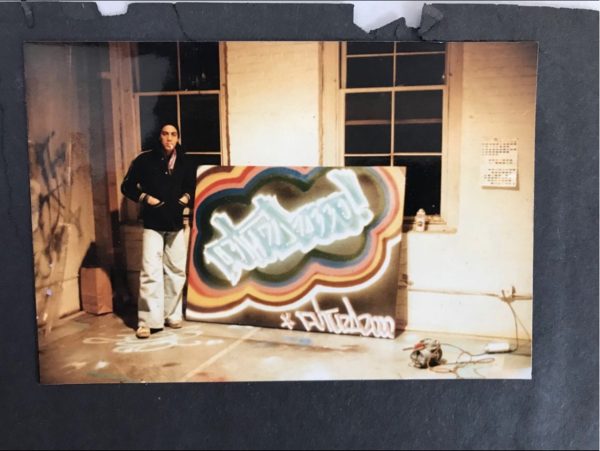
The Esses studio, and the uptown/downtown connections of Fab 5 Freddie, provided essential links for graffiti writers to be able to start working off the street and exhibiting in spaces like Fashion Moda (where, as part of the Graffiti Art Success of America show in 1980, Futura first exhibited a piece), Fun Gallery (where Futura held his first solo show in 1982) and PS1 (as part of the seminal New York / New Wave exhibition curated by Diego Cortez, and featuring, amongst others, Basquiat, Dondi, Haring, Warhol, Burroughs and Mapplethorpe). Although Graffiti 1980 introduced Futura to working on canvas, he retained a love of painting on found objects scavenged on the day of the week that NY's residents threw out their furniture; the piece in that first Fashion Moda exhibition was done on plywood and fridges (a particular favourite because of their smooth metal surfaces; as Futura as remarked, "I never met a marker that didn’t love a refrigerator.") As well as sharing a similar ethos to the practice of racking, this also created a strong link between the streets where he had started and the galleries where he was now exhibiting.
Futura continued to paint trains throughout this period including a significant whole car with Dondi at the Utica Avenue layup in Brooklyn, but it’s hard for anything to compare with his magnum opus Break wholecar. Over the years, the rudimentary tags captured by Don Hogan Charles in Spanish Harlem in 1966 developed into bubble letters and then, later on, highly-stylised wild style. Like many others, Futura had been stylistically indebted to the likes of Stay High 149 and Phase 2 who had had been at the forefront of this evolution. However, graffiti had always fundamentally been a letter-based art form; that was until Futura created a paradigm shift with his use of pure abstraction. "I wasn't good at characters. I couldn't do letters. I couldn't do what they were doing. I knew I had to do something different. So I painted the whole train and called it Break.” The whole car was painted over the course of four hours on the night of April 11, 1980 and was captured so perfectly the following morning by Martha Cooper as it passed through the South Bronx at Hoe Avenue.
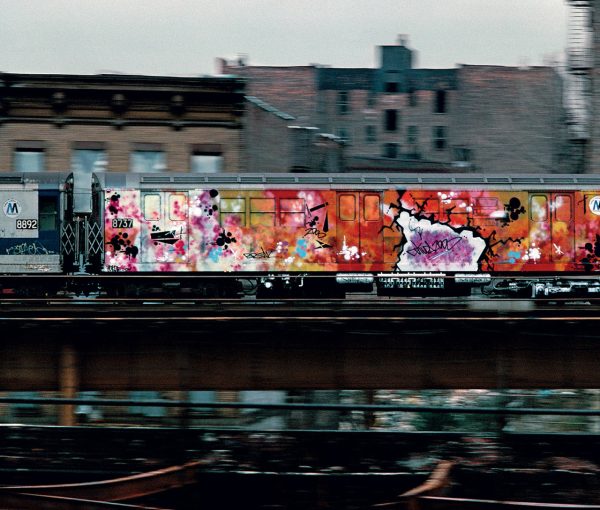
Visual elements of the piece led some to compare it to the work of Kandinsky and Malevich, but this was fundamentally misunderstanding its true lineage. Unaware of those artists, Futura had instead taken the abstract elements that appears inside graffiti lettering, blown them up super-sized and discarded the letters which once housed them. "There’s a kind of a crevice on the right side of the centre door that was intended to be the physical break, the fracture. For me, it was breaking tradition and now in the physical sense of this wagon, I’m breaking into it, I’m breaking it apart.” The ethereal masterpiece is dominated by a saturated cloud of burning magenta, crimson and carmine which contrasts with the cool blues, whites and purples that occupy the rear of the car. Break was an unequivocal embrace of the belief that stylewriting is fundamentally about style.
The first half of the 1980s was a very compressed, hyper-kinetic period for Futura. At the start of the decade, he shared a studio with Fab 5 Freddy in the Lower East Side, on 2nd St. and Avenue B. Freddy introduced Futura to Debbie Harry, Keith Haring and countless others who made up the community of artists in the downtown scene. At the invitation of Haring, they co-curated Beyond Words at the Mudd Club which included the work of Rammellzee, Lee Quiñones and Lady Pink and introduced Patti Astor to hip-hop and the studio practice of graffiti artists. During this period, Futura had his portrait painted by Basquiat, featured as the cover story in the Village Voice and was a regular at Andy Warhol’s Factory; the downtown scene was a riot of creative energies and Futura was at its very centre.
Futura first met The Clash in 1981 when he painted a backdrop live onstage during their 17 night run of shows at Bonds in New York and this led to him joining them on their 10-week Radio Clash tour of Europe later the same year; quite a contrast with some of his previous jobs such as packing groceries at Gristedes and working the grills at McDonalds! Futura went on to provide the artwork for their Radio Clash single and the band even laid down the rhythm tracks and produced his own foray into music, The Escapades Of Futura 2000. "The memory I had was so beautiful. I am so happy to get to have that experience with them. I had relationships with them up until Joe [Strummer] died. Joe was like a father, a brother to me. He was a very important man in my life."
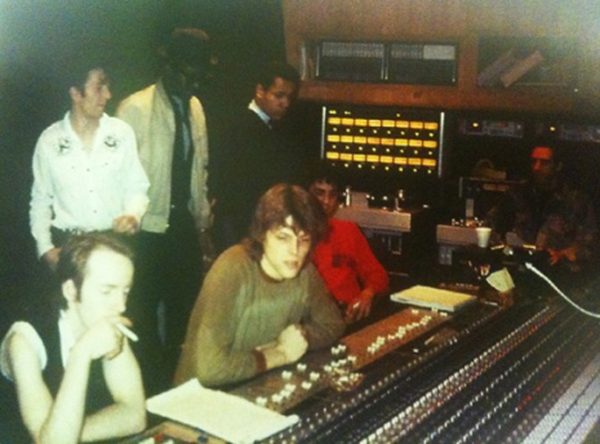
Futura was crucially important as an ambassador, spreading graffiti worldwide including on the New York Rap Tour of Europe where the art form often found a receptive and enthusiastic audience more readily able to see its legitimacy than many back in the US. It was on this tour in Paris that he met the French radio personality Christine Carrie and three years later they married in City Hall in NY; Fab Five Freddy undertook the Best Man duties. Together they had a son Timothy (now better known professionally as 13th Witness) and six years later a daughter, Tabatha. He describes his children as "the foundation to the architecture. Without them this would be a shallow facade." His current wife, Shilei McGurr (née Wang), has been behind the lens of many of the photos we see of both the man and his work in more recent years.
Futura was shown at the Tate in London, Tony Shafrazi in New York and Four Blue Squares in San Francisco. But, as the 1980s drew on, the art world’s increasing focus on Basquiat and Haring came at the expense of the rest of the downtown and graffiti scenes. There was a game that had to be played to stay part of that world, and Futura was not prepared to play that fake game. "I didn’t really belong in that world" he says and he was relieved to have gotten out. In 1986, he moved from his Williamsburg loft to 2nd Avenue, and feeling pressure to follow his father’s earlier advice, he pursued more conventional careers including sorting mail for the U.S. Postal service across the street from PS1, driving a cab for the NYC Taxi & Limousine Commission and working on airframes and powerplants for United Airlines; as unlikely as it may seem, he even took and passed the exam to become cop! Fortunately, by 1989, he had met the fashion designer Agnès b. and she became a patron, furnished him with a studio and provided a pathway back to being an artist, as well as later introducing his work to the gallerist Yvon Lambert.
In 1992, Futura started a small apparel company and design collective with Gerb and Stash called Not From Concentrate (GFS). Futura saw the project as "an opportunity…to create wearable art and offer it at an affordable price" and, along with the West Coast’s Stüssy, the labels led the NY streetwear scene and paved the way for the likes of Supreme. GFS produced a very modest run of c.70 t-shirts featuring an oversized Phillie Blunt logo and gave them away to friends like B-Real, who wore it in one of Cypress Hill’s music videos, and Ad-Rock, who wore it when the Beastie Boys played on MTV, creating a pre-internet sensation. They secured a limited licence from Hav-A-Tampa (the parent company of Phillies Blunt) but were unable to commercially release their higher quality t-shirts before the market was saturated with cheap bootlegs and knock-offs. Nevertheless, the Phillies Blunt tee led the way in terms of commercial logo appropriation and Futura recalled that "it totally changed our lives." A few years later Bleu replaced Gerb in the trio and the label morphed into Project Dragon (BSF); in 2004 he opened his own Futura Laboratories clothing store in Fukuoka, Japan.
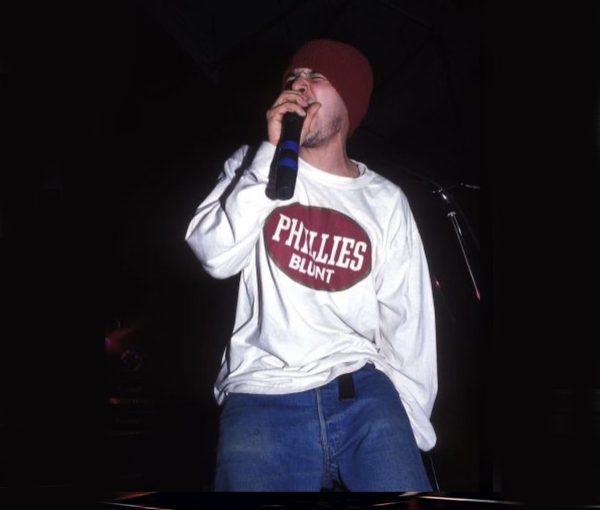
The same year that FGS was formed, Futura met James Lavelle, the founder of Mo’Wax records, at the first International Bicycle Messenger competition in Berlin. Futura’s artwork would go on to feature on many of the label’s releases, most notably Unkle’s 1998 Psyence Fiction album, and it came to define the feel and aesthetic of the label. The collaboration also resulted in the self-titled 2000 book published by Booth-Clibborn which remains the benchmark for art book design and production. Working with Mo'Wax introduced a whole new audience to Futura’s work and he would go on to work with an array of other companies including Nike (for whom he created the currency-collaged For Love or Money (FLOM) sneaker), BMW (for whom he painted an M2 sports coupé as part of the Art Car Program which had previously included Hockney, Holzer and Rauschenberg) and Comme Des Garçons (for whom he co-designed their spring/summer 2020 collection). In respect of these commercial projects, Futura maintains that "I know my own path, and I know my path has never been driven by economics. It's driven by passion."
Futura is an artist who has always looked for other creative outlets and embraced change. As the internet-age loomed, he viewed websites and graffiti as sharing the same goal of "getting up" and he committed to teaching himself to write HTML. The site he launched in 1996 was one of the first artist’s websites online and a version can still be found tucked away in an online archive. When choosing his name, the year 2000 was a long way off and Futura recalls "I never thought I’d live to see it anyway." But, as the Millennium approached, it became time to embrace another change and to drop the second half of the name that he’d been known by for the previous 30 years.
By 2002, Futura had a studio on North 6th Street in Brooklyn and there was the start of a resurgence of interest in increasingly diverse, non-commissioned art in public spaces. By this time, some close friends such as Dondi, who he affectionately describes as a "naive genius” had passed away. However, Futura’s continued artistic relevance and, what Agnès b. describes as the "independence and kindness of the man himself," ensured that he made new connections such as with fellow Brooklyn-based artists José Parlá and KAWS. In July 2007, he participated in a two-man show with the former entitled Pirate Utopias as Elms Lester in London, where Futura created the works for the show in situ over a four week period.
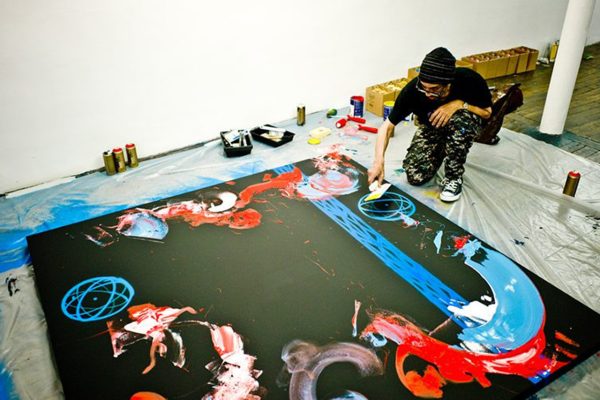
In respect of his practice, Futura says "I’m drawing for myself. I’m having a conversation with my canvas" and to allow this to happen he has developed his own visual language which was on full display at his 2014 Introspective show at Paris’ Magda Danysz gallery. Perhaps the best known element of this iconography is his atom, which he first introduced into his work in the early 1980s. It "represents my energy, my spirit. It’s not a nuclear power but it’s a human power," he says. The continuous orbital curves of the electrons suggest perpetual movement, both in terms of Futura’s own personal ethos and as a clarion call for human progression. But atoms are the building blocks of matter, so for many looking from the outside, they are also the embodiment of the artist’s foundational contribution to graffiti. Another complementary element of his work is the latticed tower of a crane whose inspiration dates back to a memory as a young man of seeing these huge structures on construction sites in the heart of Manhattan. "I saw them as a metaphor for growth and change and progress," he explains. In contrast, his acutely angled chevrons appear as a strong nod towards his, and graffiti's, roots. Phase 2, a writer of whom Futura says "if I did have a sensei, he'd be it," is widely credited with being the innovator who did the most to incorporate arrows into tags and they become a hallmark of his wildstyle pieces. So, the use of these arrow-like accents ties the work back into the history of graffiti and ensures that while he is always looking forward, this is done with an awareness and acknowledgement of his aesthetic and fraternal foundations.
Futura also started developing characters in the early 1980s and from his experimentation emerged the Pointman; an imposing figure whose elongated features and otherworldly presence were inspired by H. R. Giger and the Alien films. The word Pointman refers to a military reconnaissance officer; the individual at the vanguard scoping out what lies beyond, much as Futura was doing on the New York Rap Tour of Europe back in the Autumn of 1982: "it was a metaphor for me as a person in life that I was always like, that guy." Although the Pointman significantly predates his involvement with Mo'Wax, the association did bring the figure to particular prominence and the imagery allowed his to move into the field of sculpture. At first these were small vinyl toys such the original 7.5-inch UNKLE Pointman release, but by 2022 they had become immeasurably more solid, such as the busts hewn from Statuario marble, and in some cases monumental in size, such as the 19-foot high River Warrior in Bali.

Futura occupies the almost unique position as a central figure during graffiti’s nascent days in the early 1970s, New York’s Golden Era of Subway painting and the last two decades during which art on the streets has garnered world-wide attention. He has used this position to explore through his art the concepts of both personal growth and societal progress; as Futura himself notes: "What had started out as playing in subway tunnels had progressed into midnight forays deep into the interiors of the system."
Breaking Out runs from September 21 to February 11 2024 at both UB Center for the Arts, 103 Center For The Arts, Buffalo, NY 14260 and UB Anderson Gallery, 1 Martha Jackson Place, Buffalo, NY 14214.
Lead photo credit: Shilei Wang
Streets: Banksy (North London)

Banksy is back, with a new, large-scale street piece appearing overnight on a residential building on Hornsey Road, midway between the Archway and Finsbury Park areas of North London.
AM was prompted out of hermit mode, jumped on a bus, and went to have look, before the artwork could be dogged by the petty-minded/envious, sidebusted by coattail-riders, or covered in perspex.
The whimsical mural interacts with a tree in the foreground — a rather sad-looking, currently leafless specimen that was aggressively lopped and topped by local authorities.
Having taken matters into their own hands, a stencil-sprayed character has attempted to replicate the missing foliage using a paint-filled fire extinguisher.
The piece references themes of environmentalism and activism. Perhaps also the battle against apathy, and the importance of taking an individual stand — even when such efforts may lead to partial failure (like the character covering not just the wall in paint, but also herself), or ultimate futility (given that new leaves will soon be sprouting on the tree).
It is surely no coincidence that this green spectacle was also unveiled on 17 March.
Photo credit: Patrick Nguyen.
Streets: Swoon @ Nuart Aberdeen

Nuart returns to Aberdeen this weekend with a full program of murals, conference talks and screenings and this provides a good opportunity to look back at the undoubted highlight of last year's event: Swoon's return to the streets for the first time since 2017. Following her retrospective at CIC Cincinnati, the Brooklyn-based artist, also known as Caledonia Curry, decided to shift focus to work on other pieces of her artistic puzzle, most notably the stop-motion animation Sibylant Sisters which is currently in production. But the draw of the streets and the opportunity put up work in the country from where her name derives was too great and Aberdeen was left with ten pieces of magic pasted around the city.
Caitlin
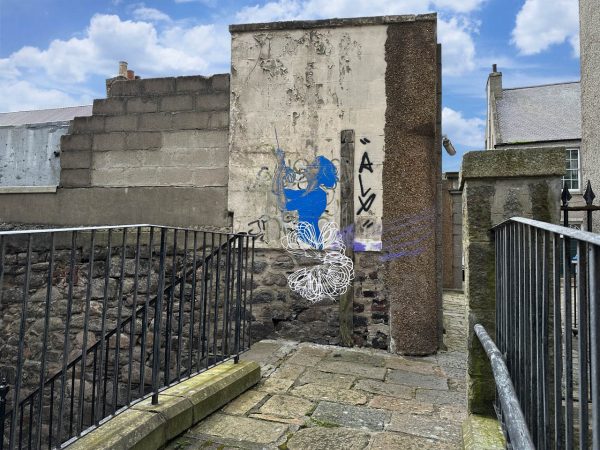
In the wake of the devastation wrought by Hurricane Katrina, Swoon and a group of friends teamed up with New Orleans Airlift to try to help revive the city’s arts scene. Swoon envisioned a playable, musical installation which would fuse two of the areas greatest cultural assets: music and architecture. The current iteration of the project features over 16 buildings and structures which have stages on which musicians can perform but also instruments embedded within their walls to create sonic, musical architecture intended to foster wonder, beauty and experimentation.
This particular image was originally created for the gates of the Music Box Village and depicts the New Orleans-based sculptor and preserver Caitlin Ezell Waugh; she’s pulling on a cable that is connected first to a pulley and then to a slide trombone. Beneath her is a motif based on Lissajous Curves which are generated by oscilloscopes and provide a visual representation of sound. But, more than this, Caitlin is a testament to creative collaboration with Taylor Lee Taylor (who designed much of the instrumentation), Darryl Reeves (a local local blacksmith who led the rigging of the musical houses) and hundreds of other creatives like Waugh who contributed towards making the Music Box Village a reality.
Aba
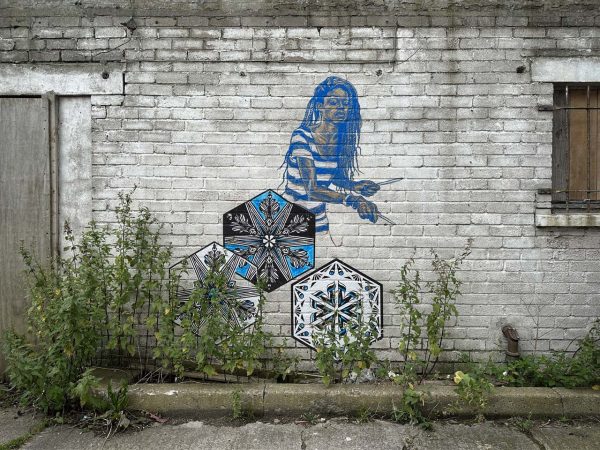
Another portrait which grew out the Music Box is that of Aba Essel, better known as Baaba Blacksheep who previously performed with the New Orleans punk band Gland and is now the lead singer with Oakland’s very own M80. Swoon grew up as a teenager in Daytona Beach listening to a healthy diet of punk rock and music has been a constant presence throughout her career.
Her first solo exhibition featured a soundscape and Japanther’s renegade, unpermitted performance out the back of a truck was a memorable feature of the opening of her landmarked 2005 show at Deitch Projects. In 2003, the Toyshop art collective, which she helped form, assembled a roving junk band which toured the streets of Manhattan entertaining bemused passers-by and she collaborated widely with Dark Dark Dark who became the effective house-band on the Swimming Cities rafts which sailed down Hudson River and across the Adriatic Sea. While waitressing in a New York diner, Swoon even featured in a music video for Thalia and a few years ago she gave us a peak into the music she listens to when working in the studio.
In this portrait, Aba plays a percussion set which is embedded in the Music Box Village and she is flanked by a scattering of hexagons whose patterns, such as that of an uncoiling fern in an ancient forest, were originally designed for tiles crafted at the Braddock Tile Project.
Bethlehem Boys
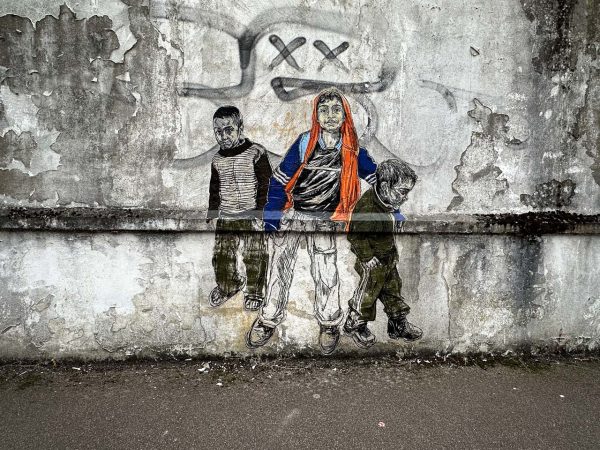
In 2007, Swoon was invited to take part in Santa’s Ghetto, Banksy’s then annual ‘squat art concept store’, which that year was decamping to Bethlehem in the West Bank. In addition to the exhibition in a former chicken restaurant in Manger Square, many of the artists including Blu, Know Hope and Paul Insect painted on the Separation Wall, which the International Court of Justice states is a violation of international law. Swoon pasted up images of Alice The Lacemaker, Girl from Rangoon Province and, on one of the Israeli watchtowers, Zahra; beneath the latter was a quote from Starhawk’s Webs of Power and hand-sewn pockets in which others could leave their own messages.
While putting up these streets pieces, Swoon saw a group of young Palestinian boys from the Aida refugee camp playing in the shadow of the 8m high wall. Looking back, Swoon recalls that “This is one of those prints that marks the moment when I first knew that I would want to try to find tenderness in a medium as stark and unforgiving as carving a sheet of linoleum with a knife.” The prominence of the wall makes it an alienating and oppressive presence, but in this group portrait, Swoon has compassionately captured the innocence and humanity of those children despite their having been forced to grow up in such an environment.
Sasu and Kasei
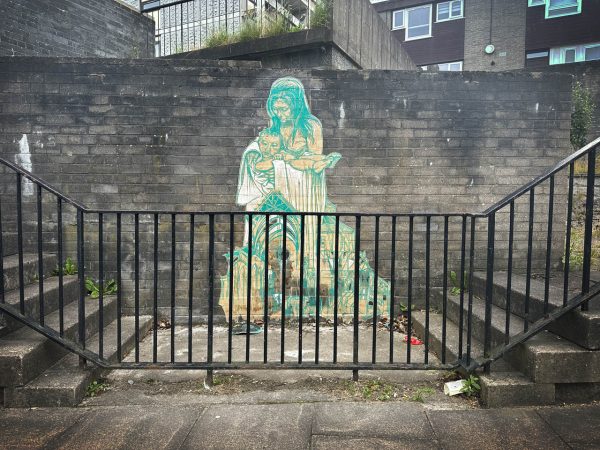
Sasu is one half of the artistic duo HITOTZUKI whom Swoon first met and exhibited alongside at the Ill Communication II exhibition in Manchester back in 2004. The husband and wife team were part of the infamous Barnstormers collective, alongside the likes of José Parlá and Maya Hayek, and her delicate geometric designs often take inspiration from the bounty of nature.
Aside from being an accomplished artist, Sasu is also a mother of two and this portrait captures her holding her eldest son Kasei after a bath. It is an activity which is at once both routine and unremarkable but also deeply devotional and ardently caring; this sense is emphasized in the piece in Aberdeen by the saintly viridian green which appears to almost glow against the soot-stained brick wall on which it is pasted. Hanging out late at night after the Ill Communication exhibition had opened, Swoon recalls a conversation between the two artists where Sasu attested to the importance of seeing from your heart because that’s your centre, rather than seeing from your head which looks down on the rest of yourself and believes itself to be separate. This feeling of assured wholeness permeates the portrait even as infant limbs sprawl out from the towel and she contends with the everyday challenges of motherhood.
Ten years on from the creation of the original image, this tender testament to maternal love was given a more humorous twist when Sasu recreated the image at Swoon’s Mirari Minima exhibition in Tokyo with a considerably more grown up Kasei!
Nicole

The eponymous subject of this both meditative and joyful portrait is the writer and designer Nicole Fenton who, like many of her subjects, is also a personal friend of Swoon. The image captures her when she was almost full-term with her daughter and her fecundity is reflected in the abundance of surrounding marine life; spotted jellyfish, pipe organ coral, devil rays and sea ferns all provide a throne for the majestic figure. At its heart, Aberdeen is a maritime city and fittingly Nicole can be found a short distance from the city’s almost 900 year old docks.
Nicole is the most recent in a series of works by Swoon which centre around pregnancy and motherhood. The first of these was Zahra, pregnant with her first child and possessing a sort of Artemisian inner strength and she-wolf protective instinct; Birth captures the moment of crowning and defies western art’s irrational and inexplicable taboo treatment of the subject; Dawn and Gemma is an intimate portrait of a mother breastfeeding her child and the softness of the embrace acted as a healing counterbalance for Swoon when confronting the hardship of her relationship with her own mother.
Walkie
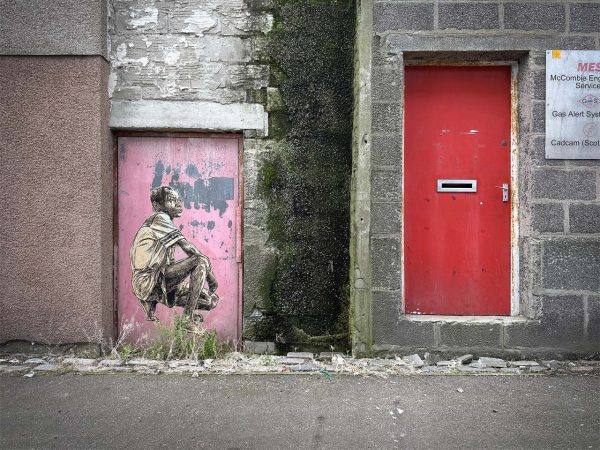
Late afternoon on 12th January 2010, a magnitude 7.0 earthquake struck Haiti killing over 100,000 people and destroying more than 300,000 homes and buildings. Swoon and a team of likeminded artists, engineers and builders came together with a common belief that the creative process and the use of local skills, materials and techniques would help in a time of crisis. A long-term relationship was established with the village of Komye, situated 15 miles west of the epicenter, and the Konbit Shelter project was formed. It takes it name from a Haitian Creole word for a traditional form of cooperative, communal labor and over the last 14 years the partnership has built a community center and three single-family homes, each designed and adapted with feedback from the community.
Walkie was a young boy from the village who often came to watch the construction of the super adobe-style community center and this is the first portrait that Swoon made after beginning work on the project. She went on to also create a portrait of Edline and since then local children have been able to attend the weekly Klub Obzevetwa which gives kids time to develop their creativity with the help of local teachers. Donations towards the ongoing running of the after-school club can be made via Swoon’s non-profit Heliotrope Foundation here.
Paulini and Rosemary

In 2012, Swoon visited the 160 Girls Project in Kenyan which seeks justice for the victims of sexual abuse and successfully sued the Kenyan National Police Force to compel them to enforce existing laws that would protect women and girls from rape. Under the leadership of Mercy Chidi Baidoo, the project has gone on to provide training to police departments across the country and runs the Tumaini safe house for girls in Kithoka where Paulini, on the left, and Rosemary, on the right, lived.
This particular piece shows traces many of Swoon’s artistic influences such as the college of children’s drawings connecting the two figures which is suggestive of the work of Robert Rauschenberg and Romare Bearden. Her predominant use of wheat pasting, which peels and degrades with time, embraces Gordon Matta-Clark’s thoughts on the transience of life and how some things are just not meant to last. But, more specifically with this piece, there is an awareness of the importance of site-specific context; Aberdeen is known as the Granite City, as a result of the high proportion of buildings which have been hewn from the rock retrieved from quarries dotted around the local area and the placement of this piece on these granite walls both embeds the work in the physical soul of the city and provides a contrast between the flat pastel shades of the work and the rough darkness of the stone. But, more than anything, Swoon is the heir to Käthe Kollwitz’s compassionate expressionism and this work is imbued with the German artist’s Goethean mantra that “Seed for sowing should not be milled”.
Monica

Swoon’s first portrait of the Oakland-based artist Monica Canilao dates back to 2010. The portrait is a whirlwind of tattered bedsheets and flowing lace; extraneous limbs and fly-away hair; feathers and flowers, all caught in the maelstrom. Throughout the portrait, Canilao's idiosyncratic sense of style is evident from the fox adorning her head and the bold, handmade jewellery she wears, to her tattoo of a dove shot through with arrows and misfit makeup which is perceptible even in monochrome.
Working in a broad range of mediums, Canilao’s work is a visual record of a living history. Her own experiences are intertwined with remnants of past lives through the use of found materials in her work and Swoon has brought this foundational aspect of Canilao’s work into the portrait by drawing her resting on a giant portrait of an ancestor.
Swoon has described Monica as equal parts muse and wifey and it’s a creative partnership which has spawned a diverse and enduring range of collaborations from creating works on the whitewashed walls of Djerba in Tunisia to the underwater Amniotic installation with Chandran Gallery at Miami Basel in 2014. They have exhibited together on a number of occasions including at Black Rat Projects in London in 2007 and at their joint Witch Wife show in San Fransisco almost a decade later.
Moni and the Sphinx
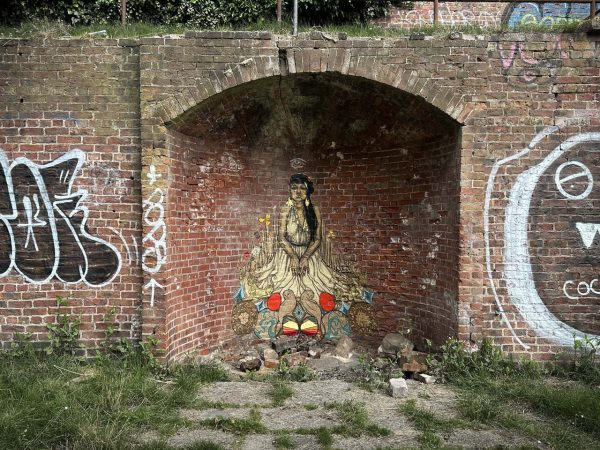
In August 2016, Swoon returned to the subject of the women that she describes as her “most singular muse and collaborator”. This statuesque iteration of Canilao is rich with symbolism and creates what she describes as a “looping narrative about the instinctual nature of the psyche, growth, abundance, boundaries and protection.” When she was 17, Swoon spent a year in Prague as an exchange student sating her appetite for the work of Egon Schiele and the Medusa-esque sphinxes in this work reference the huge stone versions which guard the entrance to the National Library. Over recent years, Swoon has undertaken deep therapeutic work to confront her traumatic upbringing and family life; during this time she encountered a pair of owls while walking in the forest and the birds continued to appear symbolically throughout a given day. They appear in this portrait at the feet of Moni acting as a source of strength and courage.
Monica’s own expressiveness and creativity is celebrated in part through a series of soon-to-be hatching eggs, flowing rivers and flowering irises, all of which were drawn from imagination. But, more fundamentally, lines which correspond with the folds of her dress give the impression of her innate creativity flowing from her patiently drawn hands out into the world.
Milton II (Diogenes)

This portrait of Swoon’s father Milton was created in the months following his passing in 2015, when she was trying to come to terms with her loss and grief. Milton had been addicted to heroine, but got clean when Swoon was four years old and supported her throughout her career. He is described as having never quite “got free of the tensions that bound him” and he is depicted here as an old man in his wilderness searching for what would come next.
Hidden away where the paper has been pasted into the corner of a step is a ribbon inscribed with words which Swoon saw written on a picture on her father’s bookshelf “I have been where you are now, and you will be where I have gone.”
The work references both Ilya Repin’s painting of Leo Tolstoy Barefoot and the teachings of Diogenes, who was one of the founders of the philosophical school of Cynicism. Swoon recalls her father telling the the story of when Diogenes, sat on the roadside eating lentils, met Aristippus; the latter argued that, "If you would learn to be subservient to the king, you would not have to live on lentils" to which Diogenes retorted, “if you learn to live on lentils, and you will not have to cultivate the king.” This lesson in the meaning of freedom appears to have left a lasting impression on Swoon helping her to go out into the world and create the impossible, from Adriatic flotillas and Haitian community centres to works which bust taboos and help us all to see the world differently.
Photo credit: feralthings